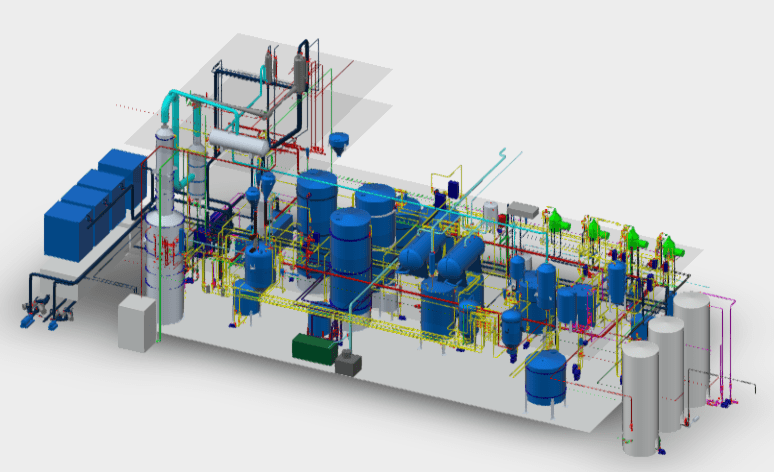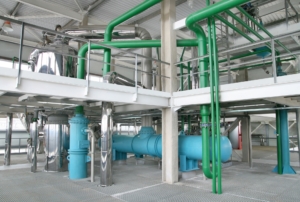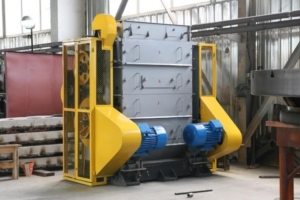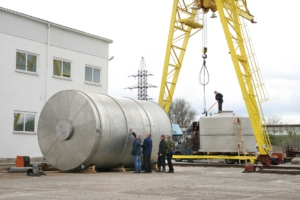Oil Shop Design Basics: Equipment Selection and Process Optimization
- Selection of appropriate equipment
- Space Planning and Equipment Localization
- Optimization of technological processes
- Cost management and energy efficiency
- Development of safety standards and personnel training
- Regulatory framework for designing a butter shop in Ukraine
- Factors for successful implementation of a butter shop project
- Prospects for the development of the butter factory
Project oil workshop is a complex process that requires knowledge in engineering, automation, energy efficiency and compliance with regulatory requirements. In this article, we will look at the key technical aspects of creating butlocechus, starting with the choice equipment and ending with the implementation of modern standards.
Selection of appropriate equipment

The basis of any production is equipment for technological lines, which must meet the requirements of performance, quality of raw materials processing and cost-effectiveness. The main types of oil storage equipment cover:
- Milk oil presses have a productivity of 20 to 300 tons per day and a capacity of 45 to 132 kW, depending on the type – forpresses and the press of final spin.
- Centrifuges for oil cleaning provide a variety of speed (up to 10,000 rpm) and cleaning efficiency. Used to remove residual solids and water.
- Extraction systems use solvents to effectively remove the cake oil. An important factor here will be to take into account environmental factors, because modern models are equipped with solvent recovery systems.
- Filtration settings. Specialized filter filters up to 1 μm that allows to reach a high level of product transparency.
Important nuance is also the choice of refining lines for cleaning oil and providing its high quality, which reduces the cost of materials and improve the efficiency of raw material processing.
Space Planning and Equipment Localization
Production of the space of butlocceum should ensure the most efficient use of the area and convenience for staff. Properly delayed butloczech minimizes logistics and time. Basic principles:
- The sequence of processes. The raw material flow should be straight to avoid intersections between production zones.
- Equipment arrangement. The presses should be located closer to the raw material supply zone and cleaning systems – next to the output zones of the finished product.
- Square standards. According to Ukrainian standards, at least 5 m² of production area should be allocated per 1 ton of production.
In addition, do not forget about compliance with safety standards when location of equipment and other objects within the shop, taking into account the requirements for ventilation and fire safety system.
Optimization of technological processes
In butlocacks, excess heat is often formed from presses and centrifuges. It can be used to heat raw materials before processing, which reduces the cost of heating up to 20% and increases the efficiency of oil extraction by 5-7%.
For this purpose, the following are used:
- SCADA systems for monitoring all technological parameters in real time.
- PLCs (programmable logic controllers) that provide automatic correction of processes, for example, regulation of extraction temperature.
Integration of automatic control systems allows to reduce the impact of errors, facilitate control over all stages of production, and also increase productivity. It is necessary to constantly analyze and improve current processes to achieve better quality and reduce costs for raw materials and energy.
Cost management and energy efficiency
For the successful operation of a butter factory, it is important to ensure effective management of costs for raw materials, energy and labor. Increased energy efficiency can be achieved through:
- Using motors with an energy efficiency class of IE4, which consume 15–20% less energy.
- Implementing heat recovery systems that can save up to 25% of energy costs for heating.
- Solar panels or other renewable energy sources to cover part of the energy consumption.
For a workshop with a capacity of 1 ton/h, the approximate energy consumption is:
- Presses: 7–10 kW.
- Centrifuges: 5–7 kW.
- Other systems (pumps, lighting, ventilation): 3–5 kW.
- In total, up to 20–25 kW/h, which is equivalent to 18,000 kW/month.
It is also necessary to implement cost accounting systems at each stage of production, which will allow for quick adjustment of resource consumption.
Development of safety standards and personnel training
During the design of a butter shop, it is important to ensure the safety and comfort of personnel. This includes briefing and training of employees on the use of equipment, as well as strict adherence to safety rules. Particular attention should be paid to fire safety, since butter shops usually have high operating temperatures and use flammable materials.
It is worth paying attention to the use of specialized high-quality ventilation systems to remove solvent vapors. It should also be remembered that the maximum permissible noise level for production premises on the territory of enterprises is 80 dB according to the resolution of the regional department of the State Labor Service of Ukraine.
Regulatory framework for designing a butter shop in Ukraine
When designing a butter shop, the following regulatory documents must be taken into account:
- DBN V.2.2-12:2019 — requirements for industrial facilities.
- DSTU ISO 22000:2019 — food safety management.
- HACCP — mandatory food quality and safety control system.
- Environmental requirements — Law of Ukraine “On Environmental Protection”.
Compliance with these standards ensures that production complies with Ukrainian and international standards.
Factors for successful implementation of a butter shop project

The success of the butter shop project implementation depends on the balance of technology, economics, and compliance with modern trends.
The first stage is a feasibility study, which includes calculating the return on investment, energy costs, and projected production volumes. Engineering design is also important, including the development of process maps and modeling of material flows to avoid “bottlenecks” in production. The right choice of energy-efficient equipment with the possibility of modernization allows you to maintain competitiveness for the long term.
It should also be remembered about attracting experienced specialists for the correct design and configuration of all stages of production, providing technical support and maintenance, including mobile technical teams to support the equipment. It is necessary to ensure comprehensive interaction at all stages of design.
Prospects for the development of the butter factory
The prospects for the development of butter factories focus on innovation and increasing production efficiency. The main trends include the introduction of energy-efficient technologies, automation of processes to reduce costs and increase productivity, as well as expanding the range, taking into account the growing demand for organic oils. It is also important to integrate environmental standards, such as waste recycling and the use of renewable energy sources. Access to international markets, compliance with high quality and environmental standards, as well as adaptation to new consumer trends allow butter factories to remain competitive and ensure sustainable development.






